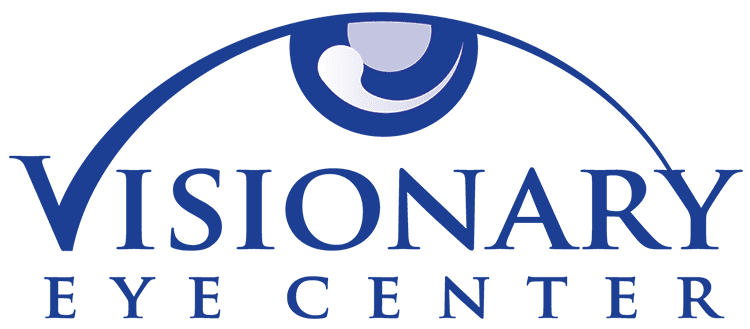Keratoconus is a progressive thinning disorder of the cornea that typically begins as a teenager and continues to change into a patient’s 40’s and possibly beyond. As the cornea thins vision becomes worse, leading to glare, halos, ghosting, scarring, increased astigmatism and aberration. As the cornea continues to thin, glasses become unable to correct the distortion caused by keratoconus and specialty contact lenses and surgery become necessary. Keratoconus affects approximately 1/2000 Americans, which means a little over 200 residents of Reno and Sparks suffer from this condition.
At the Visionary Eye Center we use the latest in corneal topography and optical coherence tomography to detect and manage patients with keratoconus and other corneal ectasias like pellucid marginal degeneration. Corneal topography using the Humphrey Atlas 9000 measures the curvature of the front surface of the cornea and using the latest Pathfinder II statistical analysis can detect even the earliest stages of corneal disease. Combining this data with Nevada’s only Visante Omni optical coherence tomographer we are able to construct a complete profile of both the anterior and posterior surface of the cornea, helping us to discover cases of posterior keratoconus that would not be detectable by anterior topography alone.
Today there are a wide range of treatment options for the keratoconic patient. Most start with glasses when their disease process is mild, but soon many find that contact lenses are necessary to correct the distortion caused by keratoconus. Though we specialize in fitting rigid gas permeable (RGP) lens designs for corneal disorders at the Visionary Eye Center, modern technology no longer means that keratoconic patients only have one option. New custom soft lenses like the Kerasoft IC, hybrid lenses and scleral lens options have given us a range of comfortable lenses with great visual optics. Unfortunately some of our patients progress to the point that even our best efforts with contact lens technology isn’t enough and surgery is required.
There are several procedures that are available for the keratoconic patient. The latest and most exciting surgical option is corneal crosslinking. Using riboflavin and UV-A light, the surgeon is able to cause the stromal layer of the cornea to develop new bonds, strengthening the cornea and slowing or even possibly halting further corneal thinning. Contact lenses and glasses are still necessary after this procedure. This procedure finally gained FDA approval in 2016 after being widely used around the rest of the world for the last 10+ years. Like all surgeries, there are complications. Crosslinking can cause permanent corneal haze and scarring, infection and possible corneal melt.
Another surgical option is Intacs corneal implants. These are thin semi-circular rings that are inserted into the stromal layer of the cornea. This flattens and normalizes the shape of the cornea providing better vision, but glasses or contact lens correction is still typically needed. Finally, corneal transplantation is necessary for the most progressive cases. Transplantation may be partial like in deep anterior lamellar keratoplasty (DALK) or complete as in penetrating keratoplasty (PKP). Glasses and contacts are usually necessary to restore visual function after transplantation. At the Visionary Eye Center we are experienced in managing patients with keratoconus, pellucid marginal degeneration and other corneal ectasias. We can provide the education, care and specialty lenses necessary for vision both before and after any surgical procedure.
 775.827.1100info@visionaryeyecenter.com8175 South Virginia Street Suite B-900
775.827.1100info@visionaryeyecenter.com8175 South Virginia Street Suite B-900